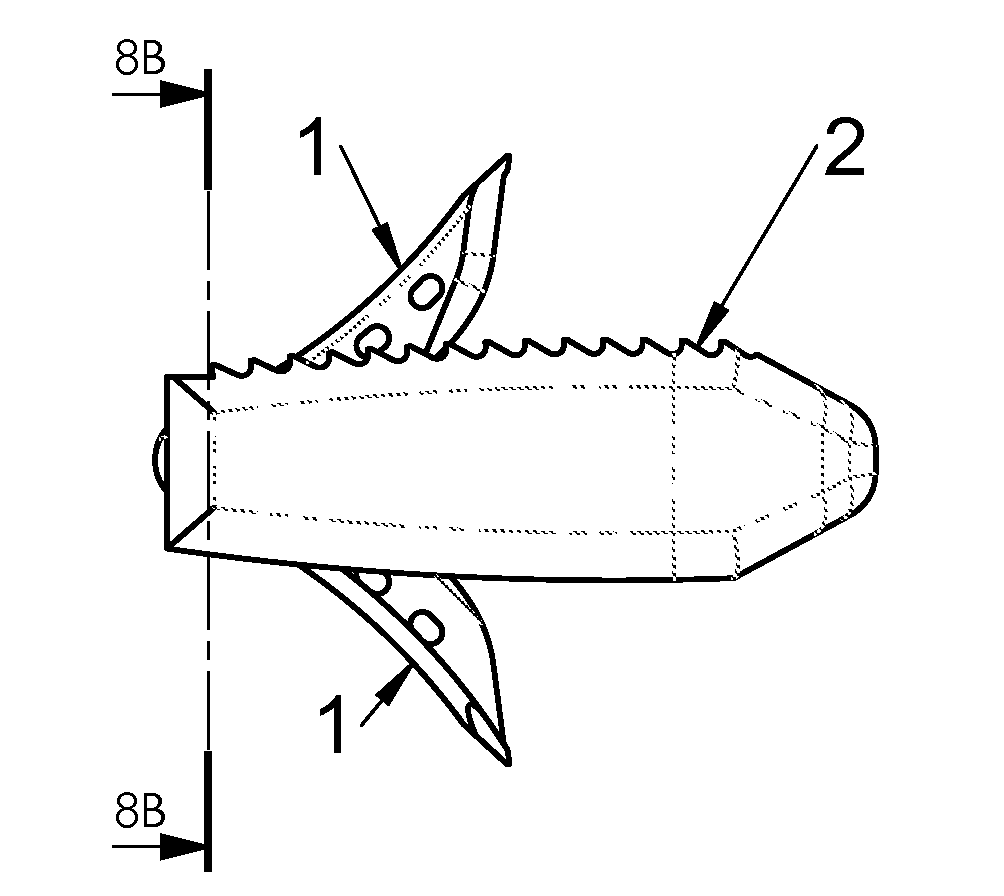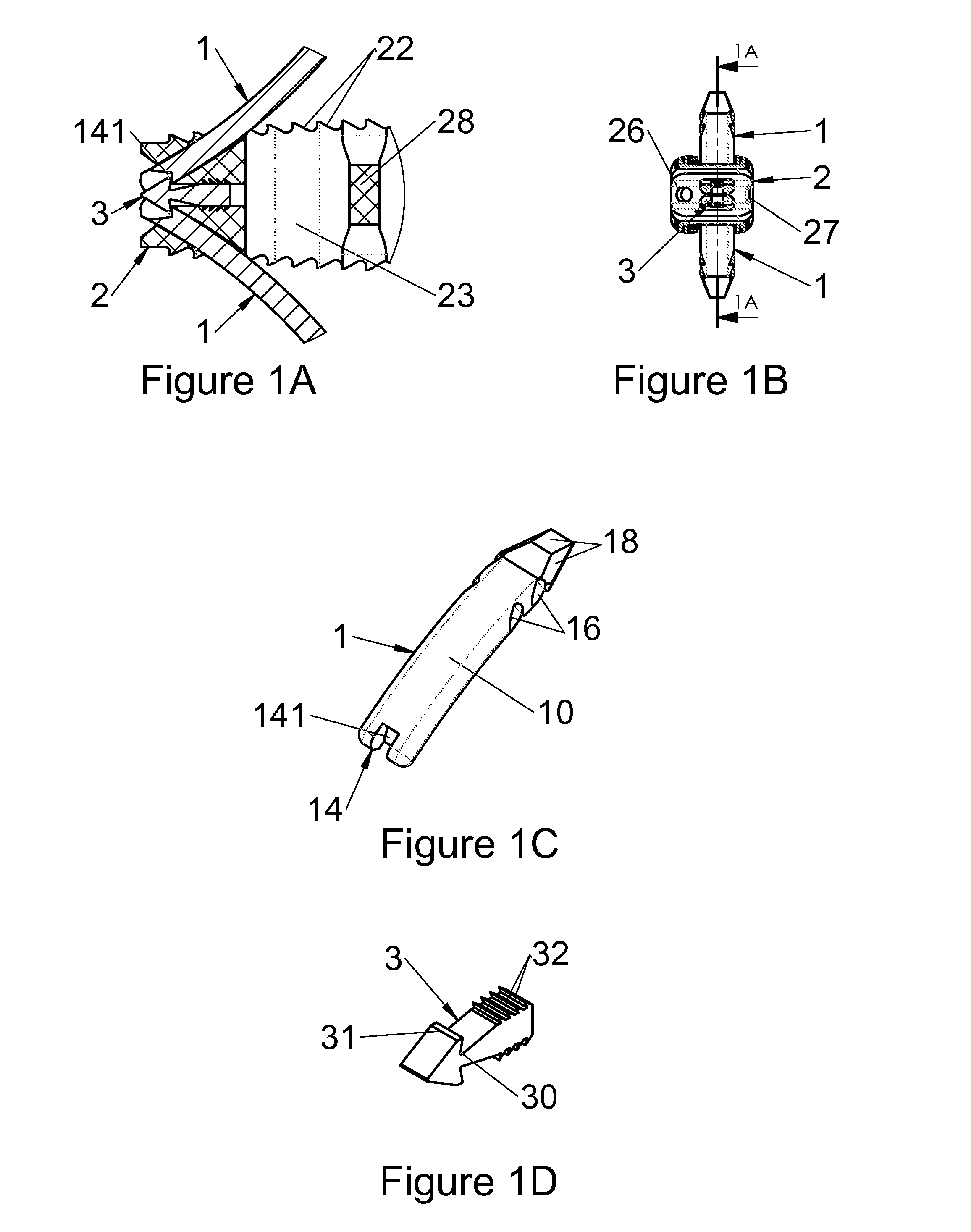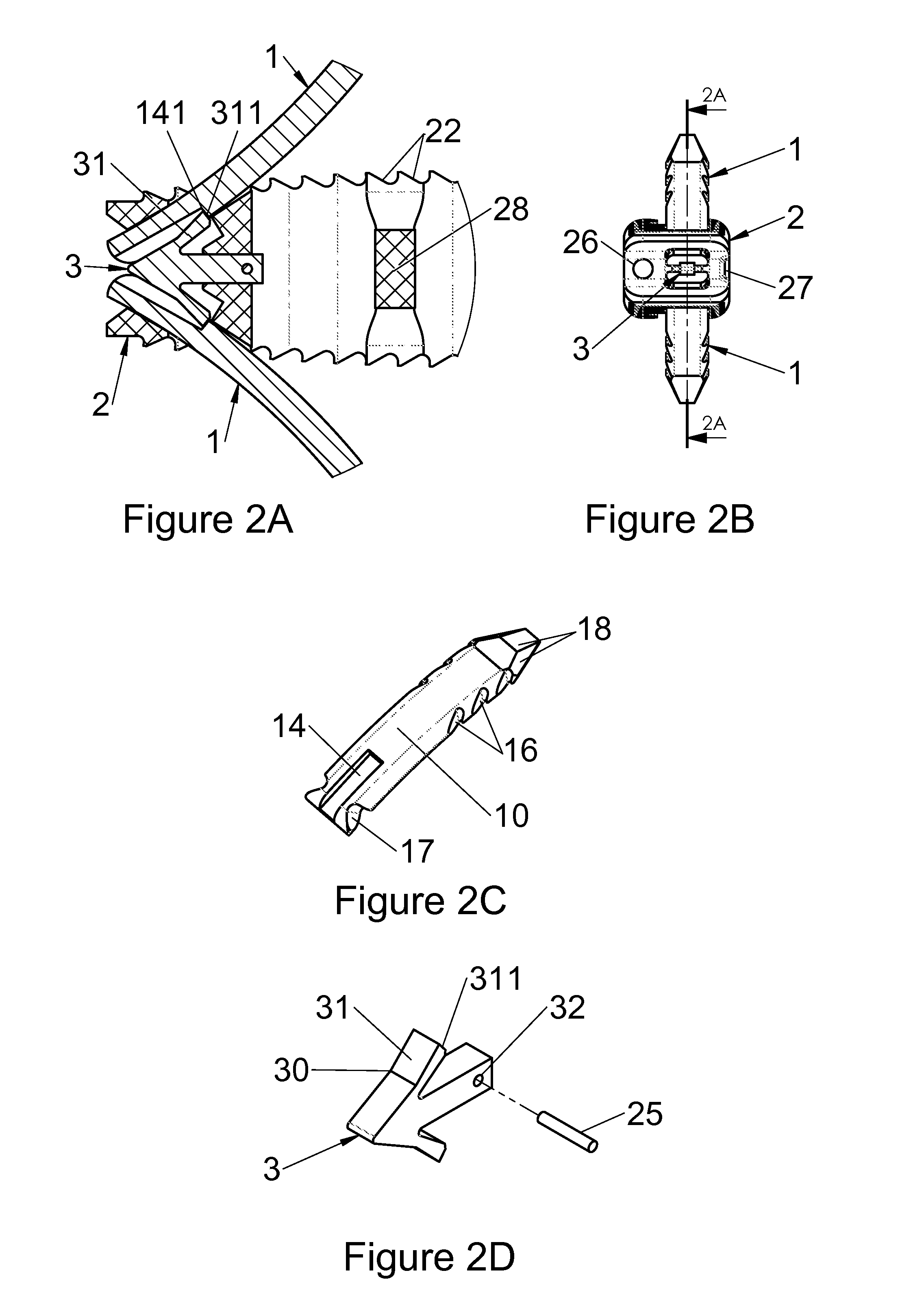Anchoring device for a spinal implant, spinal implant and implantation instrumentation
a technology for anchoring devices and spinal implants, applied in the field of orthopaedic implants, can solve the problems of the inability to adjust the anchoring device, so as to reduce the risk of weakening the implant, improve the reliability, and improve the stability
- Summary
- Abstract
- Description
- Claims
- Application Information
AI Technical Summary
Benefits of technology
Problems solved by technology
Method used
Image
Examples
Embodiment Construction
[0100]Various embodiments of this disclosure will now be described with reference to the figures of the present application, which among other subject matter are mostly directed to 3 groups of objects and various combinations thereof:[0101]anchoring devices (1) (or “attachment devices” or further “anchors”), and / or anchoring systems including several anchoring devices (1) which may be identical or different, or even complementary to each other;[0102]intervertebral implants (2) laid out for receiving one or several of such devices (1) or anchoring systems, including but not limited thereto, intersomatic cages configured for an implantation through a posterior or transforaminal route;[0103]instrumentation (3, 4, 5) for implanting these implants (2) between the vertebrae and attaching them with such devices (1) or anchoring systems.
[0104]Each of these groups of objects may include various possible embodiments relating to a given object. Each of the objects include various elements (gen...
PUM
 Login to View More
Login to View More Abstract
Description
Claims
Application Information
 Login to View More
Login to View More - R&D
- Intellectual Property
- Life Sciences
- Materials
- Tech Scout
- Unparalleled Data Quality
- Higher Quality Content
- 60% Fewer Hallucinations
Browse by: Latest US Patents, China's latest patents, Technical Efficacy Thesaurus, Application Domain, Technology Topic, Popular Technical Reports.
© 2025 PatSnap. All rights reserved.Legal|Privacy policy|Modern Slavery Act Transparency Statement|Sitemap|About US| Contact US: help@patsnap.com



